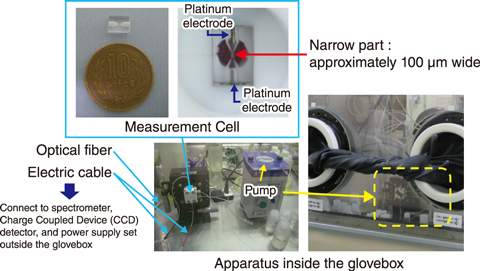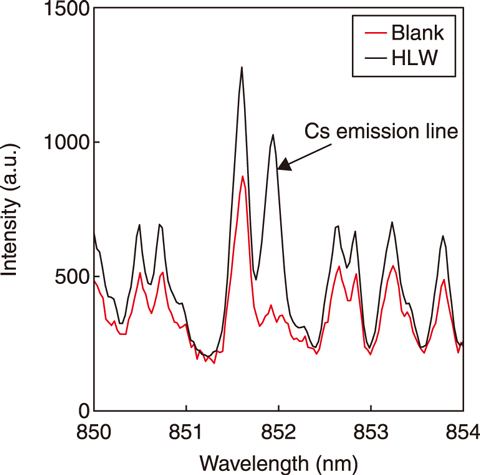
Fig.8-24 Liquid electrode plasma optical emission spectrometry (LEP-OES)

Fig.8-25 LEP-OES apparatus installed inside the glovebox

Fig.8-26 LEP emission spectra of HLW
Highly radioactive liquid waste (HLW), which is generated by the reprocessing of spent nuclear fuel, contains fission products (e.g., Cs and Sr), and reagent additives from the process such as Na. Elemental concentrations in HLW should be accurately determined because they affect the immobilization of radioactive materials in the vitrified glasses after the treatment of HLW. Radioactive samples including HLW are analyzed inside an airtight shielded cell or glovebox to protect the operator from radiation exposure. Inductively coupled plasma optical emission spectrometry (ICP-OES) and inductively coupled plasma mass spectrometry (ICP-MS), which are often used for elemental analysis, require plasma gas, cooling water, and a large-capacity power supply. Thus, the specific design and manufacturing of the glovebox and instrumental modification are required before their installation into the shielded cell and glovebox. Remote operated maintenance inside the shielded cell would be another issue.
This study therefore used liquid electrode plasma (LEP), which is generated in a microchannel, and LEP-based optical emission spectrometry (LEP-OES) to deliver a safe, compact, remote operated elemental analysis method. As shown in Fig.8-24, LEP is generated by applying pulsed direct current voltage when a sample solution is introduced into the narrow part of a microchannel 100 μm wide. The atom-specific emission line is observed when the element in the sample enters the LEP. This method spectroscopically analyzes the emission line (i.e., LEP-OES) and has been applied to elemental analysis. Since LEP-OES does not require plasma gas, cooling water, and a large-capacity power supply, the apparatus is more compact than that of ICP-OES or ICP-MS, and is more easily installed into a generic glovebox. Also, the generation of liquid waste and radiation exposure to the operator may be reduced because the sample is treated in the microchannel.
Therefore, as shown in Fig.8-25, an LEP-OES system was designed by combining the optimized apparatuses for spectrometer resolution and grating to measure radioactive sample. The emission spectrum of a Cs standard solution was obtained, where emission lines were observed at 852.1 and 894.3 nm. Furthermore, the detection and quantification limits of Cs at the strongest emission line of 852.1 nm were 0.005 mg/L and 0.02 mg/L, respectively, thus indicating that the proposed method has sufficient sensitivity for Cs determination in HLW. No spectral interferences from co-existing elements were observed at this wavelength from the measured emission spectrum of the simulated sample, which imitated elemental compositions of HLW. Therefore, HLW from the Tokai Reprocessing Plant was measured using the developed LEP-OES system. The measured Cs concentration was 3.61 ± 0.47 g/L, showing good agreement with the calculated value of 3.60 g/L, as demonstrated in Fig.8-26. The proposed method allows the analytical apparatus inside the glovebox to be downsized and can be used to determine the concentration of Cs in HLW; future efforts will extend usage to the determination of Sr and Na concentrations in HLW.
(Noriyasu Kodaka)
<Previous: 8-10 | Next: 9 Computational Science and E-Systems Research>